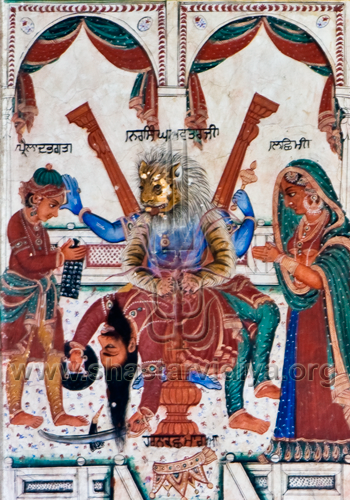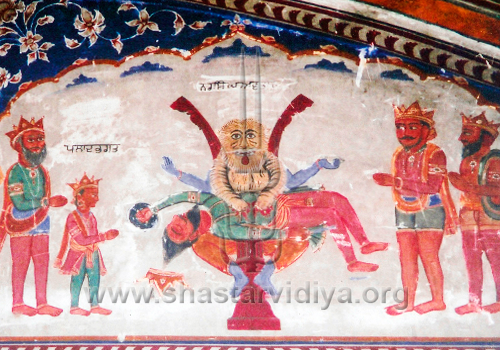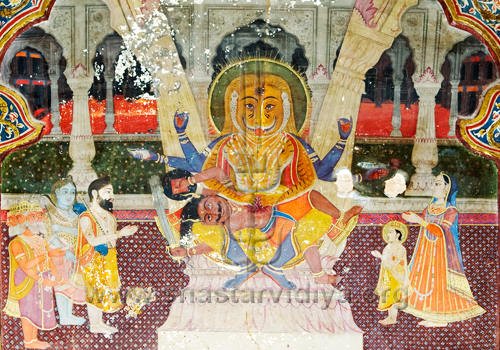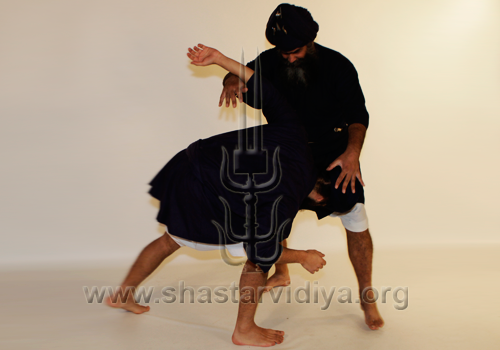
"It was now evening, and the pillar, rent asunder, exhibited the terrific spectacle of the diety in the monstrous shape of half-man, half lion, Narsingha; who issuing forth, attacked Hiranyakshipu (a demon), and after a severe conflict of an hour, seized his devoted opponent by the hair, and at the moment when the day ends, dragged him to the severed pillar, and rent him to pieces"
(The Hindu Pantheon)
The inspiration behind this style is the part-human, part-tiger (in some parts of India, a lion, or leopard is also accepted) and part-divine incarnation of Vishnu.
It is said that Narsingha Avatar rescued the child devotee of Vishnu, named Prahlad, from his own evil demon father Harnakasha.� The weapons of choice include very heavy metal shields and axes with long shafts which are designed to tear down shield walls. The warriors employing this style are adorned in a greater deal of body armour including chainmail; far more than Nandi. This is due to their role in providing support for the vanguard of the battle formation.
This Yudhan is also characteristically utilised when holding breeches and in fighting duels. In its unarmed form, it is characterised by a wide two-step gait stance which allows for an entrenched position.
Yet, paradoxically, it possesses great evasive abilities; it seeks to envelope opponents and get to the head and neck as quickly and directly as possible.� The style often finishes, with opponent's neck being torn off.





